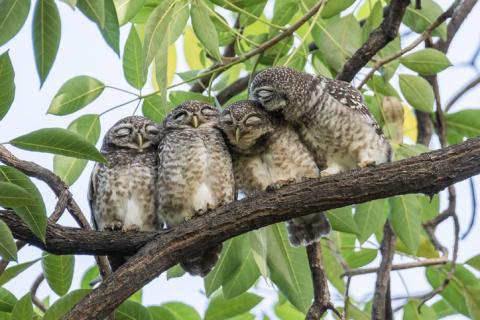Bats Quiz
Although bats have very good eyesight, they mainly depend on what system to navigate and capture insects in the dark?
- Bats emit pulses of very high-frequency sound (inaudible to human ears) at a rate of a few to 200 per second. Their echolocation (sonar) ability is so acute they can avoid obstacles no wider than a piece of thread and capture tiny flying insects even in complete darkness.
Which of the following bat species found in the United States is NOT on the endangered species list?
- Of the 45 species of bats found in the continental United States, six are listed as endangered.
What part of a nectar bat's anatomy is unusually long, enabling them to reach deep within the flowers to obtain the nectar?
- Some nectar bats have tongues up to 150% the length of its body—proportionally the longest of any mammal.
What do nectar bats' tongues have on the end, which they use to mop up nectar and pollen from within flowers?
- Plants deposit pollen on the bat's head, which is then spread from flower to flower.
On average, how many offspring do female bats produce per year?
- The gestation period (pregnancy) of bats lasts only a few weeks.
Fruit bats perform an extremely important function by dispersing what part of the fruit?
- The largest of bats, and one of the most important to humans, fruit bats disperse seeds of bananas, avocados, figs, plantains, and more.
Unlike some other bat species, what body part of vampire bats is developed to help them feed on their prey?
- Vampire bats can walk, run, and jump. They also have heat sensors in their nose to help them find a good spot on the animal's body to feed.
How do bats survive the cold months if they do not migrate south to find food?
- Several bat species hibernate in dense clusters on cave walls or ceilings. Clusters may consist of hundreds of bats per square foot.
What is the biggest threat to the survival of fruit bats?
- Deforestation is a growing problem in the tropics and a major threat to fruit bats because forests provide them with food and shelter.
What do the majority of bat species eat for nourishment?
- Insect-eating bats either capture flying insects in their mouths or scoop them into their tail or wing membranes.






